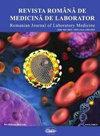Matrix-assisted Laser Desorption Ionization–Time of Flight Mass Spectrometry (MALDI-TOF MS) for subgingival bacteriome identification in a group of treated periodontitis patients: a case series
IF 0.5
4区 医学
Q4 MEDICINE, RESEARCH & EXPERIMENTAL
引用次数: 0
Abstract
Abstract Periodontitis is a chronic multifactorial polymicrobial infection, characterized by profound modifications of the composition and proportion of the subgingival microbiota. Microbiological laboratory tests are sometimes used in periodontal diagnosis and monitoring of treatment, but both conventional cultivation methods and molecular techniques have some major drawbacks. Therefore, other performant bacterial identification methods must be considered. The aim of the current study was to use Matrix-assisted Laser Desorption Ionization–Time of Flight Mass Spectrometry (MALTI-TOF MS) analysis in association with bacterial culture method to evaluate the modifications of the subgingival bacterial composition in periodontitis patients, before and after cause-related subgingival therapy. Subgingival plaque samples were collected from periodontal pockets before and after subgingival mechanical instrumentation and adjunctive local antimicrobial applications and were cultured in aerobic and anaerobic conditions. Microbial colonies were further assessed using MALDI-TOF-MS. A total of 36 bacterial strains were isolated from a group of 16 patients. All species from the orange complex were identified by MALDI-TOF MS. A marked reduction of detection frequency was observed in most bacterial strains, including the orange complex after cause-related periodontal treatment. The results of this study indicate that MALDI-TOF MS could be considered an accurate method for oral microbial identification and the cause-related periodontal treatment is useful for reducing the microbial burden.基质辅助激光解吸电离飞行时间质谱(MALDI-TOF MS)用于牙周炎治疗患者牙龈下细菌组鉴定:一个病例系列
牙周炎是一种慢性多因素多微生物感染,其特征是牙龈下微生物群的组成和比例发生了深刻的变化。微生物实验室测试有时用于牙周诊断和治疗监测,但传统的培养方法和分子技术都有一些主要的缺点。因此,必须考虑其他高效的细菌鉴定方法。本研究的目的是使用基质辅助激光解吸电离飞行时间质谱(MALTI-TOF MS)分析结合细菌培养方法来评估牙周炎患者在病因相关的牙龈下治疗前后牙龈下细菌组成的变化。在牙龈下机械器械和辅助局部抗菌药物应用前后从牙周袋中收集龈下菌斑样本,并在好氧和厌氧条件下培养。利用MALDI-TOF-MS进一步评估微生物菌落。从16例患者中共分离出36株细菌。所有来自橙色复合体的菌种都被MALDI-TOF ms鉴定出来。大多数菌株的检测频率显著降低,包括经过与病因相关的牙周治疗的橙色复合体。本研究结果表明,MALDI-TOF质谱可以被认为是一种准确的口腔微生物鉴定方法,与病因相关的牙周治疗有助于减少微生物负担。
本文章由计算机程序翻译,如有差异,请以英文原文为准。
求助全文
约1分钟内获得全文
求助全文
来源期刊

Revista Romana De Medicina De Laborator
MEDICINE, RESEARCH & EXPERIMENTAL-
CiteScore
0.31
自引率
20.00%
发文量
43
审稿时长
>12 weeks
期刊介绍:
The aim of the journal is to publish new information that would lead to a better understanding of biological mechanisms of production of human diseases, their prevention and diagnosis as early as possible and to monitor therapy and the development of the health of patients
 求助内容:
求助内容: 应助结果提醒方式:
应助结果提醒方式:


